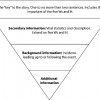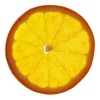 A good print news story will contain the following components: inverted pyramid structure, five Ws and H, leads, impersonal reporting, news writing techniques, quotations and attributions, Associated Press Style, and proper grammar and punctuation. This 5-page fact sheet was written by Ricky Telg, and published by the UF Department of Agricultural Education and Communication, January 2015.
A good print news story will contain the following components: inverted pyramid structure, five Ws and H, leads, impersonal reporting, news writing techniques, quotations and attributions, Associated Press Style, and proper grammar and punctuation. This 5-page fact sheet was written by Ricky Telg, and published by the UF Department of Agricultural Education and Communication, January 2015.
http://edis.ifas.ufl.edu/wc191
Tag: Ricky Telg
News Media Writing
 Knowing how to write in a news media style is important not only for an organization’s reporters, but also for its members. This 2-page fact sheet provides an overview of news writing for print, television, and radio to help you better communicate news about what is going on in your organization. Written by Ricky Telg, and published by the UF Department of Agricultural Education and Communication, January 2015.
Knowing how to write in a news media style is important not only for an organization’s reporters, but also for its members. This 2-page fact sheet provides an overview of news writing for print, television, and radio to help you better communicate news about what is going on in your organization. Written by Ricky Telg, and published by the UF Department of Agricultural Education and Communication, January 2015.
http://edis.ifas.ufl.edu/wc190
Improving Extension Program Development Using Audience Segmentation
 Developing an impactful Extension program depends on acquiring a deep understanding of the audience’s specific needs and preferences. Audience segmentation allows an agent to address the variability among Extension clientele, in order to deliver the programming and messages that are most meaningful to an audience/clientele segment. This 5-page fact sheet was written by Paul Monaghan, Laura Warner, Ricky Telg and Tracy Irani, and published by the UF Department of Agricultural Education and Communication, November 2014. (UF/IFAS photo Marisol Amador)
Developing an impactful Extension program depends on acquiring a deep understanding of the audience’s specific needs and preferences. Audience segmentation allows an agent to address the variability among Extension clientele, in order to deliver the programming and messages that are most meaningful to an audience/clientele segment. This 5-page fact sheet was written by Paul Monaghan, Laura Warner, Ricky Telg and Tracy Irani, and published by the UF Department of Agricultural Education and Communication, November 2014. (UF/IFAS photo Marisol Amador)
http://edis.ifas.ufl.edu/wc188
Persuasion as a Communication Tool
 Think about a time when you wanted your parents to do something for you, such as buy you a special birthday gift, let you stay up late, or go out with your friends. Your attempts at persuasion probably focused on communicating specific reasons why your parents should take the action you wanted. Persuasion is a communication tool that can be adjusted to convince a single person, or to move an entire audience to a desired action. In this publication you will learn several techniques for persuasive communication. This 2-page fact sheet was written by Laura Gorham, Ricky Telg, and Tracy Irani, and published by the UF Department of Agricultural Education and Communication, July 2013.
Think about a time when you wanted your parents to do something for you, such as buy you a special birthday gift, let you stay up late, or go out with your friends. Your attempts at persuasion probably focused on communicating specific reasons why your parents should take the action you wanted. Persuasion is a communication tool that can be adjusted to convince a single person, or to move an entire audience to a desired action. In this publication you will learn several techniques for persuasive communication. This 2-page fact sheet was written by Laura Gorham, Ricky Telg, and Tracy Irani, and published by the UF Department of Agricultural Education and Communication, July 2013.
http://edis.ifas.ufl.edu/wc144
Persuasion in Messages
 Specific contextual cues are added to media messages that persuade people to think one way or another about an issue and influence their actions. In this publication, you will learn the different ways that the mass media use persuasion and how persuasion encourages the audience to change their attitudes or behavior. This 3-page fact sheet was written by Laura Gorham, Ricky Telg, and Tracy Irani, and published by the UF Department of Agricultural Education and Communication, July 2013.
Specific contextual cues are added to media messages that persuade people to think one way or another about an issue and influence their actions. In this publication, you will learn the different ways that the mass media use persuasion and how persuasion encourages the audience to change their attitudes or behavior. This 3-page fact sheet was written by Laura Gorham, Ricky Telg, and Tracy Irani, and published by the UF Department of Agricultural Education and Communication, July 2013.
http://edis.ifas.ufl.edu/wc145
Persuasive Papers, Speeches, and Campaigns
 Persuasion can be used in written essays, speeches or as part of media campaigns that attempt to influence an audience to change their thinking or behavior. This publication will familiarize you with the tools necessary to develop a persuasive essay, speech, or media campaign. This 3-page fact sheet was written by Laura Gorham, Ricky Telg, and Tracy Irani, and published by the UF Department of Agricultural Education and Communication, July 2013.
Persuasion can be used in written essays, speeches or as part of media campaigns that attempt to influence an audience to change their thinking or behavior. This publication will familiarize you with the tools necessary to develop a persuasive essay, speech, or media campaign. This 3-page fact sheet was written by Laura Gorham, Ricky Telg, and Tracy Irani, and published by the UF Department of Agricultural Education and Communication, July 2013.
http://edis.ifas.ufl.edu/wc146
Planning Special Events
 Learning how to plan special events is an important skill that can benefit you and your organization. This publication is designed to help you understand what special events are and how to conduct them. After reading this publication, you will be able to explain how event sites are chosen, what criteria are used to plan events, and how to handle site permits, contracts, and budgets. You also will learn the five critical stages in planning a special event and how to evaluate an event. This 6-page fact sheet was written by Reba Ellen Hicks, Ricky Telg, and Tracy Irani, and published by the UF Department of Agricultural Education and Communication, July 2013.
Learning how to plan special events is an important skill that can benefit you and your organization. This publication is designed to help you understand what special events are and how to conduct them. After reading this publication, you will be able to explain how event sites are chosen, what criteria are used to plan events, and how to handle site permits, contracts, and budgets. You also will learn the five critical stages in planning a special event and how to evaluate an event. This 6-page fact sheet was written by Reba Ellen Hicks, Ricky Telg, and Tracy Irani, and published by the UF Department of Agricultural Education and Communication, July 2013.
http://edis.ifas.ufl.edu/wc147
Event Marketing and Public Relations
 Marketing your event so that people know about it and are motivated to attend is extremely important. The five P’s of marketing – product, promotion, price, place (location), and public relations – must be taken into consideration in order to have an event that is well attended. This 2-page fact sheet was written by Reba Ellen Hicks, Ricky Telg, and Tracy Irani, and published by the UF Department of Agricultural Education and Communication, July 2013.
Marketing your event so that people know about it and are motivated to attend is extremely important. The five P’s of marketing – product, promotion, price, place (location), and public relations – must be taken into consideration in order to have an event that is well attended. This 2-page fact sheet was written by Reba Ellen Hicks, Ricky Telg, and Tracy Irani, and published by the UF Department of Agricultural Education and Communication, July 2013.
http://edis.ifas.ufl.edu/wc148
Instructional Methods for Distance Education (AEC345/WC026)
 Much of the time, teaching with distance education technologies is a matter of adapting the teaching styles and instructional methods teachers have been using for years in the traditional classroom. This 5-page fact sheet applies basic teaching principles to distance education technologies. Written by Ricky W. Telg, and published by the UF Department of Agricultural Education and Communication, September 2012.
Much of the time, teaching with distance education technologies is a matter of adapting the teaching styles and instructional methods teachers have been using for years in the traditional classroom. This 5-page fact sheet applies basic teaching principles to distance education technologies. Written by Ricky W. Telg, and published by the UF Department of Agricultural Education and Communication, September 2012.
http://edis.ifas.ufl.edu/wc026
Brochures and Newsletters (WC131)
 Brochures are small, usually folded documents used to inform, educate, or persuade the reader. They are commonly used to promote organizations, products, or events. Brochures attract attention through eye-catching design. Brochures must contain clear, concise, focused writing because they are so short. When writing and designing a brochure, incorporating these recommendations can contribute greatly to your document’s overall effect. This 4-page fact sheet was written by Ricky Telg, and published by the UF Department of Agricultural Education and Communication, June2012.
Brochures are small, usually folded documents used to inform, educate, or persuade the reader. They are commonly used to promote organizations, products, or events. Brochures attract attention through eye-catching design. Brochures must contain clear, concise, focused writing because they are so short. When writing and designing a brochure, incorporating these recommendations can contribute greatly to your document’s overall effect. This 4-page fact sheet was written by Ricky Telg, and published by the UF Department of Agricultural Education and Communication, June2012.
http://edis.ifas.ufl.edu/wc131
Graphic File Formats (WC130)
 When designing documents, you have to be aware of the different types of images you may receive. This 2-page fact sheet provides an overview of raster graphics and vector graphics. Written by Ricky Telg, and published by the UF Department of Agricultural Education and Communication, June 2012.
When designing documents, you have to be aware of the different types of images you may receive. This 2-page fact sheet provides an overview of raster graphics and vector graphics. Written by Ricky Telg, and published by the UF Department of Agricultural Education and Communication, June 2012.
http://edis.ifas.ufl.edu/wc130
Elements of Document Design (WC129)
 Where the principles of document design provide considerations for overall document layout, the elements of document design focus on these specific visual elements that make up the visual content of the document: text and typefaces, visuals, graphics, color, and white space. This 4-page fact sheet was written by Ricky Telg, and published by the UF Department of Agricultural Education and Communication, June 2012. http://edis.ifas.ufl.edu/wc129
Where the principles of document design provide considerations for overall document layout, the elements of document design focus on these specific visual elements that make up the visual content of the document: text and typefaces, visuals, graphics, color, and white space. This 4-page fact sheet was written by Ricky Telg, and published by the UF Department of Agricultural Education and Communication, June 2012. http://edis.ifas.ufl.edu/wc129
Principles of Document Design (WC128)
 Good design does not call attention to itself, but good designers use the principles of document design to make sure their layouts look pleasing and attractive. The principles of document design are balance, proportion, order, contrast, similarity, and unity. This 3-page fact sheet was written by Ricky Telg, and published by the UF Department of Agricultural Education and Communication, June 2012.
Good design does not call attention to itself, but good designers use the principles of document design to make sure their layouts look pleasing and attractive. The principles of document design are balance, proportion, order, contrast, similarity, and unity. This 3-page fact sheet was written by Ricky Telg, and published by the UF Department of Agricultural Education and Communication, June 2012.
http://edis.ifas.ufl.edu/wc128
Document Design (WC127)
 Document design is the process of choosing how to present all of the basic document elements so your document’s message is clear and effective. When a document is well designed, readers understand the information more quickly and easily. Readers feel more positive about the topic and more accepting of its message. This 3-page fact sheet was written by Ricky Telg, and published by the UF Department of Agricultural Education and Communication, June 2012.
Document design is the process of choosing how to present all of the basic document elements so your document’s message is clear and effective. When a document is well designed, readers understand the information more quickly and easily. Readers feel more positive about the topic and more accepting of its message. This 3-page fact sheet was written by Ricky Telg, and published by the UF Department of Agricultural Education and Communication, June 2012.
http://edis.ifas.ufl.edu/wc127
Video Editing (WC126)
 Editing a video is a creative process where you put all the various parts together into one comprehensive program. Video editing software programs allow you to make changes easily. This 2-page fact sheet introduces the concept of video editing. Written by Ricky Telg, and published by the UF Department of Agricultural Education and Communication, June 2012.
Editing a video is a creative process where you put all the various parts together into one comprehensive program. Video editing software programs allow you to make changes easily. This 2-page fact sheet introduces the concept of video editing. Written by Ricky Telg, and published by the UF Department of Agricultural Education and Communication, June 2012.
http://edis.ifas.ufl.edu/wc126
Video Equipment and Video Shot Composition (WC125)
 You should become as familiar as possible with the video camera you plan to use and how best to use it in creating effective video shots. For a basic video shoot, the minimum equipment requirements are a video camera, a microphone, a light source, and a tripod. Composition refers to the types of video shots you will shoot. This 5-page fact sheet provides an overview of equipment and composition techniques. Written by Ricky Telg, and published by the UF Department of Agricultural Education and Communication, June 2012.
You should become as familiar as possible with the video camera you plan to use and how best to use it in creating effective video shots. For a basic video shoot, the minimum equipment requirements are a video camera, a microphone, a light source, and a tripod. Composition refers to the types of video shots you will shoot. This 5-page fact sheet provides an overview of equipment and composition techniques. Written by Ricky Telg, and published by the UF Department of Agricultural Education and Communication, June 2012.
http://edis.ifas.ufl.edu/wc125
Scriptwriting (WC124)
 For video productions, not only does the script have to read well for the eye, but it also has to sound good for the ear. This 3-page fact sheet provides an overview of good scriptwriting techniques. Written by Ricky Telg, and published by the UF Department of Agricultural Education and Communication, June 2012.
For video productions, not only does the script have to read well for the eye, but it also has to sound good for the ear. This 3-page fact sheet provides an overview of good scriptwriting techniques. Written by Ricky Telg, and published by the UF Department of Agricultural Education and Communication, June 2012.
http://edis.ifas.ufl.edu/wc124
Video Production: Getting Started (WC123)
 Today, just about anyone can post videos on the Web so that friends and family can see them, capture news events and distribute them online to television stations or networks that have websites, or shoot video “in the field” and bring the “field” back to the classroom. This 2-page fact sheet has information for novice video producers about developing video productions. Written by Ricky Telg, and published by the UF Department of Agricultural Education and Communication, June 2012.
Today, just about anyone can post videos on the Web so that friends and family can see them, capture news events and distribute them online to television stations or networks that have websites, or shoot video “in the field” and bring the “field” back to the classroom. This 2-page fact sheet has information for novice video producers about developing video productions. Written by Ricky Telg, and published by the UF Department of Agricultural Education and Communication, June 2012.
http://edis.ifas.ufl.edu/wc123
Public Speaking (WC115)
 Knowing what to say and how to say it are foundational skills for all leaders; therefore, people promoting the agricultural industry need to know how to speak in face-to-face situations. This 3-page fact sheet shares the basics about gathering information and organizing, writing, and delivering speeches. Written by Ricky Telg and published by the UF Department of Agricultural Education and Communication, August 2011.
Knowing what to say and how to say it are foundational skills for all leaders; therefore, people promoting the agricultural industry need to know how to speak in face-to-face situations. This 3-page fact sheet shares the basics about gathering information and organizing, writing, and delivering speeches. Written by Ricky Telg and published by the UF Department of Agricultural Education and Communication, August 2011.
http://edis.ifas.ufl.edu/wc115
Speech Writing and Types of Speeches (WC116)
 This 3-page fact sheet focuses on structuring a speech and utilizing proper writing techniques. Written by Ricky Telg and published by the UF Department of Agricultural Education and Communication, August 2011.
This 3-page fact sheet focuses on structuring a speech and utilizing proper writing techniques. Written by Ricky Telg and published by the UF Department of Agricultural Education and Communication, August 2011.
http://edis.ifas.ufl.edu/wc116